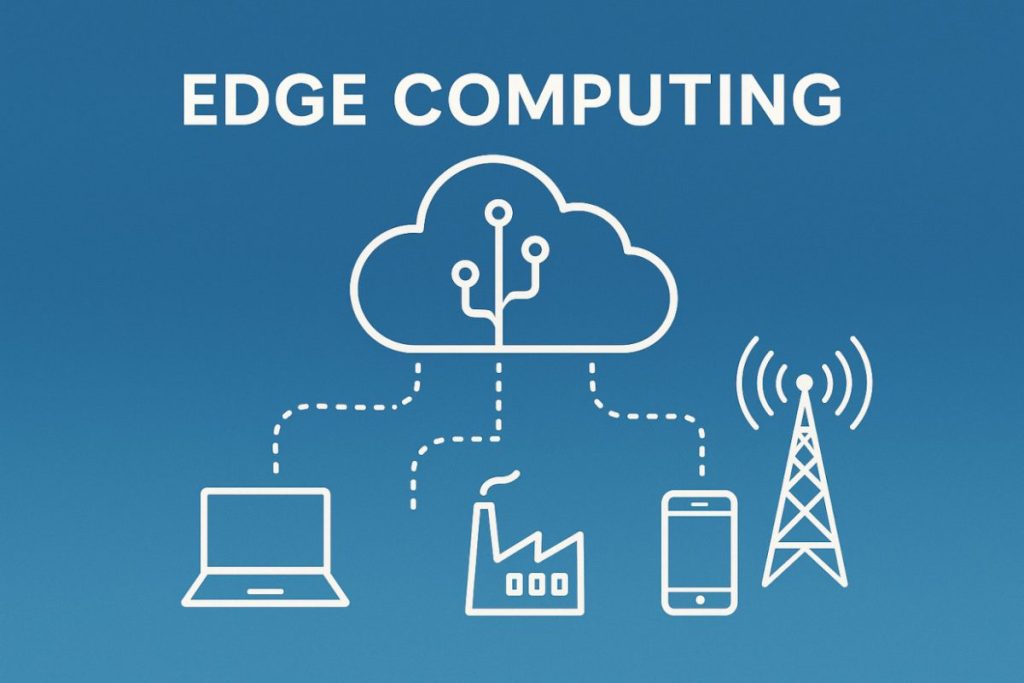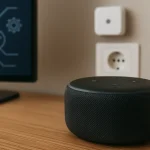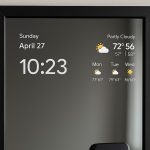The Internet of Things (IoT) has reshaped our world, embedding smart capabilities into everyday objects — from thermostats and security cameras to factory robots and self-driving cars. But as IoT devices grow in number and complexity, traditional cloud-based data processing struggles to keep up. Enter edge computing, a powerful solution that’s redefining how IoT systems operate.
What Is Edge Computing in IoT?
Edge computing refers to the practice of processing data closer to where it is generated — that is, at the edge of the network — rather than sending it to a distant cloud server. This localized data handling means IoT devices can respond faster and operate more efficiently, especially in environments where speed and reliability are critical.

Image source: Wikipedia
Why Cloud-Only Isn’t Enough Anymore
In a typical IoT setup, data travels from sensors to the cloud, where it’s analyzed and decisions are made. While this works for many use cases, it creates issues for real-time applications:
- Latency: Sending data to the cloud takes time. For applications like self-driving cars or robotic surgery, milliseconds matter.
- Bandwidth: With billions of IoT devices online, cloud bandwidth is under strain.
- Reliability: A slow or broken internet connection can paralyze cloud-dependent devices.
- Privacy: Sensitive data sent to centralized servers is more vulnerable to breaches.
Edge computing solves these by processing data locally, reducing delay, and even enabling offline functionality.
How Edge Computing Works with IoT Devices
Edge computing integrates directly into IoT systems via:
- Edge Gateways: These act as mini data centers near the data source, handling tasks like filtering, analysis, and routing.
- Smart Sensors and Devices: Increasingly, sensors themselves are becoming intelligent enough to process data without external help.
- Fog Computing Layers: Sometimes, a middle layer (fog computing) bridges the gap between edge devices and the cloud for more robust architectures.
The result is faster decisions, less traffic, and greater autonomy.
Key Applications of Edge Computing in IoT
- Smart Homes and Buildings
Think motion-sensing lights that react instantly, voice assistants that don’t lag, or HVAC systems that adjust in real time. With edge computing, response times are immediate — no cloud delay. - Industrial IoT (IIoT)
In factories, edge devices monitor machines, predict failures, and prevent costly downtime — all in real time. This is known as predictive maintenance. - Autonomous Vehicles
Self-driving cars rely on cameras, radar, and sensors. Processing this massive data set locally helps the vehicle make split-second decisions without relying on cloud access. - Healthcare
Wearables and hospital monitors analyze patient vitals instantly, alerting staff if something goes wrong. Edge computing can literally save lives. - Agriculture
Smart irrigation systems, weather sensors, and livestock monitors use edge AI to optimize farming operations in areas with limited connectivity.
Benefits of Edge Computing for IoT
- Speed: Decisions are made in milliseconds.
- Reduced Costs: Less data sent to the cloud = lower bandwidth and storage costs.
- Security: Local processing minimizes data exposure.
- Scalability: New devices can be added without overwhelming central systems.
- Resilience: Devices continue working even when cloud access is down.
Challenges to Consider
- Hardware Costs: Edge-capable devices are often more expensive.
- Maintenance Complexity: Managing many local nodes can be harder than a centralized cloud.
- Standardization: With diverse vendors, compatibility is an ongoing issue.
Still, the benefits far outweigh the challenges — especially as the technology matures.
The Takeaway
Edge computing is no longer just a buzzword. It’s a fundamental shift in how IoT devices operate, making them smarter, faster, and more reliable. Whether it’s a smart thermostat in your living room or an autonomous drone in a disaster zone, edge computing is powering the next generation of IoT.
IoT Trends to watch in 2025
- Local AI in Smart Homes: What Happens When the Cloud Goes Down?
 In the age of cloud computing and always-connected devices, smart homes have become increasingly dependent on the internet. But what happens when your connection drops? That’s where local AI comes into play. This article explores the benefits, limitations, and future of local AI in smart homes systems—and why it might be the key to a…
In the age of cloud computing and always-connected devices, smart homes have become increasingly dependent on the internet. But what happens when your connection drops? That’s where local AI comes into play. This article explores the benefits, limitations, and future of local AI in smart homes systems—and why it might be the key to a… - Hidden Features of Your Smart TV You’re Probably Not Using — But Should
 Smart TVs have come a long way since their early days. While most people use them for Netflix, YouTube, and the occasional screen mirroring session, today’s smart TVs pack a wealth of features that often go unnoticed. These hidden gems can transform your entertainment experience, improve convenience, and even tighten your home security. In this…
Smart TVs have come a long way since their early days. While most people use them for Netflix, YouTube, and the occasional screen mirroring session, today’s smart TVs pack a wealth of features that often go unnoticed. These hidden gems can transform your entertainment experience, improve convenience, and even tighten your home security. In this… - Is My Smart TV Spying on Me? How to Protect Your Privacy
 Smart TV Privacy – In today’s connected homes, smart TVs are as common as coffee makers — but have you ever wondered if your smart TV is watching you back? It’s not just paranoia. With microphones, cameras, and internet connections, smart TVs can pose serious privacy risks if not properly managed. Let’s dive into what…
Smart TV Privacy – In today’s connected homes, smart TVs are as common as coffee makers — but have you ever wondered if your smart TV is watching you back? It’s not just paranoia. With microphones, cameras, and internet connections, smart TVs can pose serious privacy risks if not properly managed. Let’s dive into what… - Smart Bathrooms: Hygiene and Automation Combined
 In 2025, the bathroom is no longer just a functional space—it’s a hub of innovation. With the rise of smart home technology, bathrooms are getting a high-tech makeover. From automatic faucets to AI-powered mirrors, the smart bathroom combines hygiene and automation to create a cleaner, more convenient daily experience. Let’s explore what this transformation means,…
In 2025, the bathroom is no longer just a functional space—it’s a hub of innovation. With the rise of smart home technology, bathrooms are getting a high-tech makeover. From automatic faucets to AI-powered mirrors, the smart bathroom combines hygiene and automation to create a cleaner, more convenient daily experience. Let’s explore what this transformation means,… - Voice Assistants vs Smart Home Hubs: What Should You Choose?
 In today’s connected homes, convenience is only a voice command away. But when building or upgrading a smart home, many people face a common dilemma: Should you rely on voice assistants like Alexa or Google Assistant, or opt for a dedicated smart home hub like SmartThings or Hubitat? Both systems offer powerful ways to automate…
In today’s connected homes, convenience is only a voice command away. But when building or upgrading a smart home, many people face a common dilemma: Should you rely on voice assistants like Alexa or Google Assistant, or opt for a dedicated smart home hub like SmartThings or Hubitat? Both systems offer powerful ways to automate…








